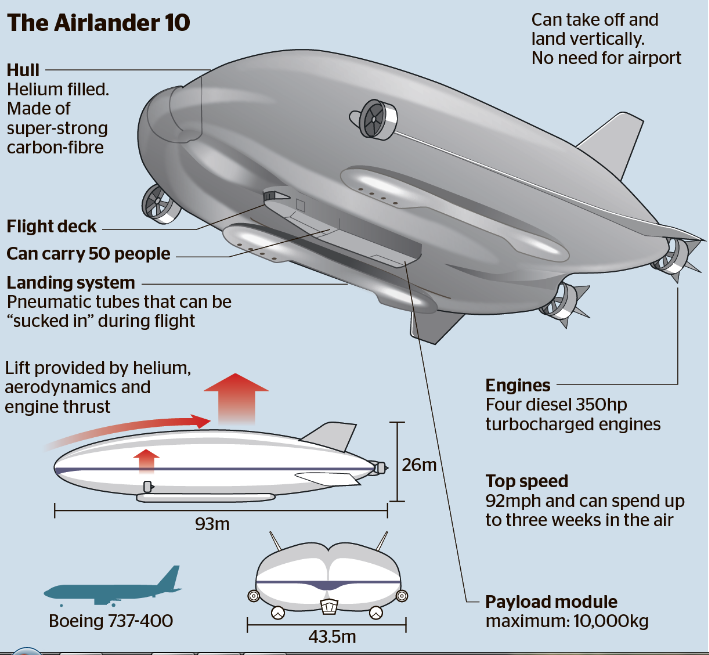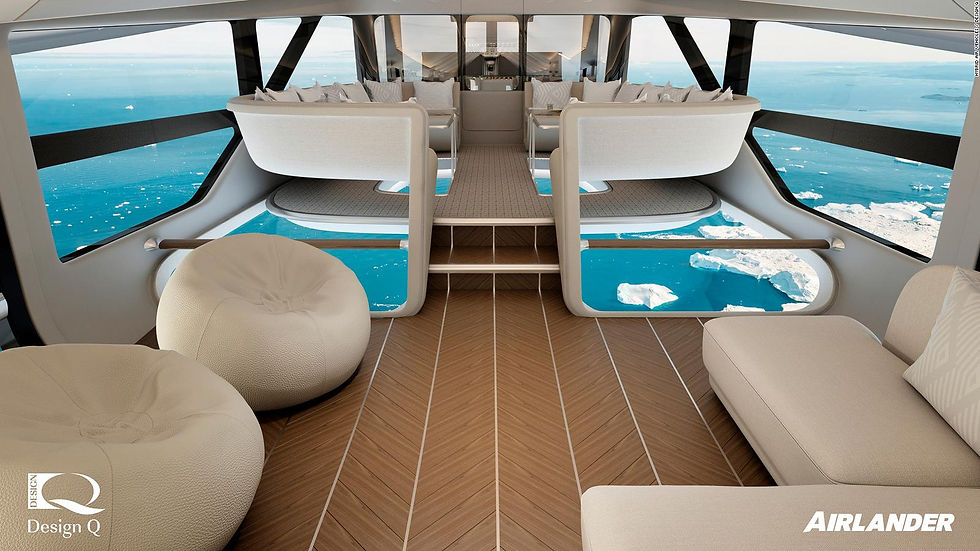A new age of airships is ready for lift-off as world's longest aircraft gets full-production go-
- Ken Ecott
- Jan 14, 2019
- 3 min read

The long awaited return of airships to the skys has begun, as world's longest aircraft is to go into full production with a model that will take its first paying passengers.
Bedford firm Hybrid Air Vehicles (HAV), the company behind the Airlander 10 airship (also known as the “flying bum” for its resemblance to a butt), said on Sunday that its current prototype will not be rebuilt but that it plans to build a new generation of airships.
It comes after the 302ft (92m) long, £32m prototype of the Airlander 10 was formally retired following successful final testing. This week HAV said it had reached a "significant milestone" after being granted Production Organisation Approval from the Civil Aviation Authority (CAA) for a new line of airships slated for the early 2020s.

Stephen McGlennan, the company’s chief executive said the firm had changed its focus last year towards the production of Airlander 10 as a commercial aircraft for customers.
“Our focus is now entirely on bringing the first batch of production-standard, type-certified Airlander 10 aircraft into service with customers,” said McGlennan.

The prototype was damaged in 2016 when it nose-dived and crashed during a test flight.
It also collapsed in November 2017 after coming loose from its moorings, with both incidents happening at its former base at Cardington Airfield, Bedfordshire.
“The prototype served its purpose as the world’s first full-sized hybrid aircraft, providing us with the data we needed to move forward from prototype to production-standard. As a result, we do not plan to fly the prototype aircraft again.”
“The prototype served its purpose as the world’s first full-sized hybrid aircraft, providing us with the data we needed to move forward from prototype to production-standard. As a result, we do not plan to fly the prototype aircraft again.”
HAV describes the 302-foot (92 meter) Airlander 10 on its website as combining the “best characteristics of fixed wing aircraft and helicopters with lighter-than-air technology to create a new breed of hyper-efficient aircraft.”
Constructed out of carbon fiber, kevlar, and mylar, and remaining aloft on inert helium, the craft was co-developed by HAV and Northrop Grumman for the U.S. Army’s experimental Long Endurance Multi-intelligence Vehicle (LEMV) program and dubbed the HAV 304.
LEMV was later canceled by the military and the airship was repurchased by HAV, transferred back to one of its facilities in Cardington, and converted into the Airlander 10, a civilian model. Airlander 10 has achieved altitudes of 7,000 feet (2,134 meters) and a top speed of 50 knots.
The tourism-focused, eco-friendly aircraft is intended to offer a leisurely voyage of the skies. Some of the cabins will have glass floors allowing passengers to take in the views from 16,000ft.

A HAV spokesperson said: "Passengers on Airlander will have luxurious private en-suite bedrooms and will be able to enjoy horizon-to-horizon views in the aircraft's extensive Infinity Lounge.
"The Altitude Bar will offer drinks with the ultimate view, while 18 guests can enjoy fine dining in the skies."

The firm claims the part-plane, part-airship will be able to take-off and land on "virtually any flat surface", as well as being able to visit locations which cannot be reached by existing transport methods.
HAV chief executive Stephen McGlennan said: "Air travel has become very much about getting from A to B as quickly as possible. What we're offering is a way of making the journey a joy."
Whatever successor is planned for Airlander 10, HAV is also planning an Airlander 50 model it describes as its “big brother,” capable of carrying 55 U.S. tons.
Further reading:







Comments